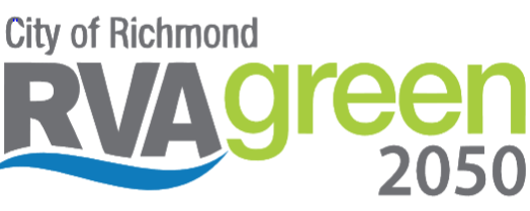Housing & Buildings
What we heard: Residents are wary of developments that reduce access to affordable housing across the city. Richmond’s residents are concerned at being priced out of the city due to increased housing demand and developments. Richmond’s buildings should be safe and affordable, which includes energy efficiency and cost-saving strategies. This includes providing access to clean and affordable housing in various communities.
What does this look like in Richmond? Richmond has one of the highest eviction rates in the country. Eviction leads to a devastating cycle of housing and economic instability. Energy burden is a contributor to Richmond’s high eviction rate. Energy burden represents the percentage of annual income that a household or individual pays towards their energy. A household is considered in “high burden” if they spend more than 6% of their annual income on energy bills - Richmond’s average energy burden is 8.47%.
Many households in Richmond lack central air conditioning, which can pose health risks with increasing extreme heat events caused by climate change. In addition, these households may be spending more on electricity bills if they use window or portable air conditioning units. As we continue to experience more dangerous heat, households may be forced to choose between staying safe by using air conditioning and running a high energy bill or being able to pay their monthly rent.
Eviction Rate (Per Renter Households)
Source: RVAgreen 2050 Climate Equity Index, Greenlink Group/Princeton Eviction Lab (2016)
Median Energy Burden (Percentage of Annual Income Spent on Energy Bills)
Source: RVAgreen 2050 Climate Equity Index, Greenlink Group (2018)
Households without Central Air Conditioning
Source: RVAgreen 2050 Climate Equity Index, City of Richmond Assessor’s Office (2018)
Actions we’re taking:
Conducting technical modeling to demonstrate how we can reach net zero greenhouse gas emissions by 2050 with strategies that also reduce housing and energy costs, support safer and more efficient buildings, and reduce costs associated with health issues caused by carbon pollution.
Identifying neighborhoods in Richmond at a higher risk of heat-related illness, financial issues due to energy burden, and other factors using the Climate Equity Index.
 RVAgreen 2050 will build on the foundation set by Richmond 300, the city’s master planning process that engaged thousands of Richmonders in identifying objectives such as these supporting safe and efficient housing and buildings:
RVAgreen 2050 will build on the foundation set by Richmond 300, the city’s master planning process that engaged thousands of Richmonders in identifying objectives such as these supporting safe and efficient housing and buildings:2.1: Align new facilities and improve existing City-owned facilities with the Future Land Use Plan
14.1: Create 10,000 new affordable housing units for very-low and low-income households over the next 10 years
14.5: Encourage more housing types throughout the city and greater density along enhanced transit corridors and at Nodes by amending the zoning ordinance
14.6: Transform Richmond Redevelopment and Housing Authority ce of integrating affordable housing into every residential neighborhood so every household has housing choices throughout the City
14.9: Ensure that homelessness is rare, brief and one-time
15.3: Reduce air pollution related to private buildings
17.6: Reduce urban heat, prioritizing areas with a high heat vulnerability index rating
What you can do:
Provide environmentally friendly heat for household water and heating with solar
Learn about income- and age-qualifying home weatherization
Take advantage of federal and state tax credit programs for the rehabilitation, re-use and preservation of residential and commercial buildings
Educate neighbors about energy efficiency: invite speakers from utilities or nonprofits to share resources available to the community to help reduce energy use
Support neighborhood revitalization through adaptive reuse and sustainable renovations of existing buildings
Check out the RVAgreen 2050 Virtual Resilience Hub resources under ‘Energy’




